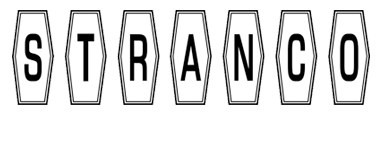For most, it can be difficult to remember a time where mobile technology and barcodes were not as widely used. From at least 68 percent of Americans who own smartphones to nearly every grocery store using innovative barcode solutions, technology is continuing to evolve and support populations of consumers who are constantly on the move. While customers are using e-commerce tools to purchase products, more manufactures are also turning to mobile technology to gain productivity and improve their barcode operations.
A brief history of the barcode and the need for mobility
To understand why mobility is so crucial within the supply chain, one must first take a look at the history of the barcode. Back in the early 1970s, a group of supermarket executives, particularly Alan Haberman, came together because they wanted to create a symbol that could be scanned quickly to push consumers throughout checkout lines with greater efficiency. After all, if customers can go through store lines more quickly, more will shop and profit margins will increase.
"Technology evolution is essential for a growing supply chain."
While they released their specifications for 14 companies to draw up a solution, it was George Laurer, an IBM employee, who disagreed with his company's previous bull's-eye design option and came up with a rectangular design that the Symbol Selection Committee voted for unanimously. They called this symbol the Universal Product Code. A year later, in 1974, a 31-year-old checkout assistant named Sharon Buchan scanned the UPC barcode of 10-packs of 50 stick fruit chewing gum in Troy, Ohio, according to BBC News. Inc. reported that one of these packs of gum is still on display at the Smithsonian today.
This brief history is important because it allows manufacturers to remember that technology evolution is essential for a growing supply chain or business. Nothing revolutionary ever results from stagnation or an inability to adapt with the times. Therefore, the humble beginnings of the modern barcode consumers know of today shows just how vital it is for organizations to go mobile and invest in computing solutions that improve their operations. Otherwise, they may find it difficult to compete in a technology-driven and highly competitive marketplace in the next few years.
The rise of the mobile supply chain
As the rest of the retail and business world is moving increasingly mobile, the supply chain is no different. Not only are more warehouses turning to mobile CRM solutions to connect more easily with clients, but many are leveraging mobile computing tools and innovative barcode technology. These efforts are made in order to improve transparency at each step of the supply chain, along with allowing workers to make faster and more trusted logistic management decisions, according to Logistics Management.
Increasingly, workers are using handheld mobile devices, mobile computing, voice and other solutions to gain more productivity and visibility across their entire supply chain. Now, operators are able to keep track of inventory more easily, conduct quality assurance audits and streamline their operations at the click of a barcode scanner. Instead of falling victim to costly product recalls or losing track of customer orders, any worker at any step of the supply chain can have access to these mobile solutions and databases.
"We're definitely seeing a more widespread adoption of mobile computing in the warehouse right now," Don Derewecki, senior consultant at the St. Onge Company, explained to Logistics Management. "Whereas 20 years ago integrated scanners and radio frequency [RF] devices were considered 'new,' more and more companies are getting away from fixed workstations, using voice, and going to more mobile solutions."
"Many shipping companies are likely to invest in mobile printers."
Derewecki continued, explaining that as more manufacturers enter into the world of mobile solutions, communication, e-commerce and cost problems associated with traditional supply chains will begin to fall away. As many emerging companies rely completely on mobile technology to handle their operations, Derewecki believes that many organizations intend to move to a hands-free and worker-friendly environment, complete with scanners, cloud computing and more.
"Anything they used to be able to do in their offices they can now do while they're out on the floor," Derewecki said. Mobile barcode scanners and other technology allows these workers to "feel the pulse" of the organization by following products from beginning to end.
Additionally, many shipping companies are likely to invest in mobile printers to print their own labels, rather than rely on outside provides. This will let employees take charge of printing as many labels as they need, rather than buy in bulk or wait on third-party shipments. Now, employees will simply print off their own custom barcode labels and then track them from the warehouse all the way to the customer. This could greatly impact the time it takes companies to process and fulfill certain orders.
At Stranco, we offer high-performance thermal transfer labels for manufacturers in a wide variety of industries. We understand that you need to access data quickly and reliably throughout the manufacturing and supply chain processes, which is why we are confident our label materials will not fail when faced with high temperatures or excessive moisture.
Speak with one of our representatives to learn more about our affordable pricing, quick shipping and low order minimums. Whether you are a large-scale manufacturer or a small startup organization, you need to invest in labels you can rely on throughout the year. Contact us today to learn more.

